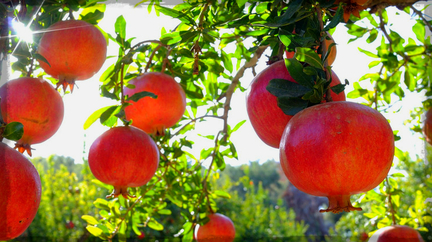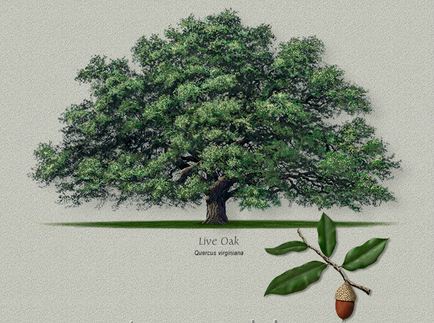
tel: 512 280-1192 Friday, Oct 11 2013
Nursery notes: Jerry Top Five Picks of the Week 1. Cape honey-
suckle, shrub with delicate orange blooms. 2 gal - $12.99. 2. Double
bloom Knock-Out roses and drift roses 3 gal $24.99. 3. Dianella
(variegated) happy in sun or shade, 1 gal for $7.99, 5 gal for $24.99.
4. Pomegranates: 'wonderful,' 'desertnyi,' and red silk (semi dwarf)
$39.99 - 5 gal. 5. Butterfly bushes 1 gal $7.99 4 colors.

Pomegranates were brought to the Americas by Spanish mission-
aries in the 16th century. For best results plant in full sun. Several
varieties currently in stock. (5 gal for $39.99)
_____________________________________________________
Chain link fences may be practical... but they're certainly not very
beautiful. A tutorial by the creative folks at Curbly shows us how
to transform them - with a few planks of wood - into structures that
look much nicer, and offer privacy as well. curbly
_____________________________________________________
Coming next Sunday: Pesto and Beyond. 2 p.m. Oct 20 Chef/
writer Mick Vann will teach us how to turn our harvested basil
leaves into a delicious Italian pesto, and will then venture into a
series of culinary variations on this theme (such as almond arugula
pesto). Free. (On the horizon: Bee Keeping 101, and the Art of
Honey Spinning 11 a.m. - 3 p.m., Saturday Oct. 26.)
______________________________________________________
Central Texas Gardener KLRU TV. Butterflies tips from Geyata
Ajilvsgi, author of Butterfly Gardening for Texas. On tour, a visit to
Anne Bellomy's urban wildlife habitat. Sat. noon, 4 p.m. or Sun. at
9 a.m www.klru

The Live oak, celebrated by Walt Whitman as 'a loving lounger in my winding
path.' Its evergreen canopy can reach a width of 50'. Illustration courtesy of
Robert O'Brien (treeguides.com)
It's 'Plant A Tree' Month
by Chris Winslow
First time visitors to the Austin and Hays County area are often
surprised by the number of trees that we have in our gardens and
parks. Maybe we take them for granted, but the presence of these
glorious oaks, elms, mesquites and pecans creates a beauty, and a
quality of life that we should be thankful for every day. With cooler
temperatures and the recent rainfall, this month is the perfect time
for us to introduce more trees into our landscapes. Below is a list
of some of my favorites. Once established, these trees are drought
tolerant and thrive in our central Texas landscapes.
_____________________________________________________
Southern Live Oak (Quercus virginiana) – One of the leading
native trees of our area. It can grow to 30 to 40 feet in height by
50 feet in width. Its evergreen canopy provides generous shade
as well as a windbreak from the winter cold when planted on the
north side of the house. (5 gal $39.99, 15 gal. $124.99)
_____________________________________________________
Mexican White Oak or Monterrey Oak (Quercus polymorpha) –
Another evergreen oak from northern Mexico that’s gaining in
popularity because of its large leaves and great pyramidal shape.
It has the added benefit of being resistant to oak wilt disease which
has taken many a tree in our south Austin and northern Hays County
neighborhoods. (5 gal $39.99, 15 gal. $124.99)
_____________________________________________________
Red Oak or Spanish Oak (Quercus shumardi and Quercus texana)
– The Shumard red oak reaches a height of 50 feet in time, and can
make a magnificent specimen. They are deciduous, and turn a brilliant
red in the fall. If you plant one on the south or west side of the house,
it will provide shade in the summer months, and in the fall and winter
months it allows the warming sunshine to heat your house. Quercus
texana is a smaller version of this oak. It grows to a height of 20 feet
and is a good choice for a small area. It also has a showy display of
red leaves in the fall. (5 gal $39.99, 15 gal. $124.99)
_____________________________________________________
Bur Oak (Quercus macrophylla) – A stately, deciduous shade tree
that’s named after the large acorns it produces. (It is also called
mossy cup oak.) It can grow to a height of 50 feet and is very drought
tolerant. They form a taproot, which makes them a little slower in
the beginning, but they always catch up after a few years. To flourish,
this oak needs lots of space. (not in stock)
_____________________________________________________
Chinquapin Oak (Quercus mulenbergia) – My favorite oak because
of its large and shapely leaves. It is a moderate grower that can reach
a height of over 35 feet. Chinquapins have a beautiful white bark and
turn a reddish bronze in the fall. (15 gal. $124.99)
_____________________________________________________
Cedar Elm (Ulmus crassifolia) – An under-used native tree that’s
tolerant of rocky soils and thick clay. They grow 25 to 50 feet and
about half as wide. Their small leaves turn a gold color in the fall.
(not in stock)
_____________________________________________________
Honey mesquite (Prosopis glandulosa) – This ever-present, although
hard to find native, is a very drought tolerant tree. It has beautiful
yellow flowers in the spring with light green foliage and a weeping
character. The bean pods provide forage for wildlife and flowers
are a great nectar source for butterflies. (not in stock)
_____________________________________________________
Remember, for these newly planted trees, they need to be watered
on a regular basis. I let water trickle at the base for half an hour to
an hour once a week when we have rains, and for two hours when
we don’t. The establishment period is getting them through their
first summer. The more consistent and regular the watering, the
faster they will grow. Happy gardening everyone!
_____________________________________________________
 Visit the website: www.itsaboutthyme.com
Visit the website: www.itsaboutthyme.com Visit the nursery:11726 Manchaca Road, Austin, 78748 Like us
on facebook